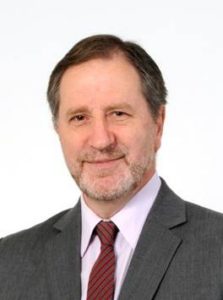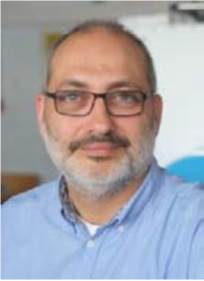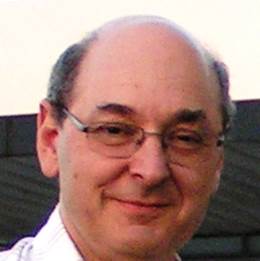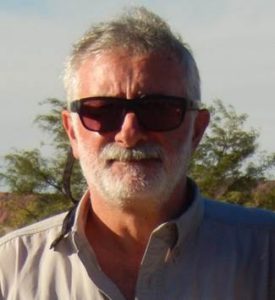
Aldo Felix Craievich is Senior Professor at the Institute of Physics of University of Sao Paulo (IFUSP), CNPq 1A Research Fellow and Co-Editor of Journal of Synchrotron Radiation (Chester, UK). At IFUSP he has been appointed as Head of Department of Applied Physics (2002-2006) and as President of the Research Committee (2007-2008).
From 1981 until 1986, Craievich was Full-Researcher at the Brazilian Center of Physical Research (CBPF), Rio de Janeiro, and from 1987 until 1997 at the National Synchrotron Light Laboratory (LNLS), Campinas-SP. At CBPF he was also Coordinator of the Executive Committee of the Synchrotron Radiation Project (PRS/CNPq) and at LNLS he was appointed as Adjoint Director and Head of the Scientific Department. While working at LNLS, he supervised the planning and construction of the first seven synchrotron beam lines and organized an intense and fruitful program for formation of the Brazilian community of LNLS users.
From 1965 until 1972 Craievich worked at the Institute of Mathematics, Astronomy and Physics of the National University of Cordoba, Argentina. In 1973 he started his research and teaching activities in Brazil, at the Institute of Physics and Chemistry of São Carlos (IFQSC, now IFSC). At IFQSC (1973-1980) he conducted the first pioneering investigations on glass science in Brazil (1973-1978) and put in operation the first Brazilian small-angle X-ray scattering setup (1973).
Craievich received his Bachelor (1964) and PhD (1969) degrees from Instituto Balseiro, Bariloche, Argentina. He performed his PhD work (1966-1969) and his first post-doctoral leave (1976) at Laboratoire de Physique des Solides, University Paris-Sud, Orsay, France; and his second post-doctoral leave at the synchrotron laboratory LURE (1981), at the same University.
The main fields of the research conducted by Craievich are condensed matter physics and crystallography. His investigations include in situ studies of structural transformations in crystalline and vitreous solids, and determinations of mechanisms of transformation and phase transitions in nanoscopic materials. Since 1981 the experimental parts of most of his investigations were carried out at synchrotron laboratories, from 1981 until 1996 at LURE, France, and since 1997 at LNLS.
Craievich is author of 260 articles and nine book chapters, and editor of four books, which received 4000 citations circa, with an h index=32. He supervised eighteen PhD (9) and MS (9) theses. He has been elected in 1980 as member of the Academy of Sciences of Sao Paulo State (ACIESP) and, in 2015, as member of the Brazilian Academy of Sciences (ABC). He received formal recognitions/distinctions from LNLS staff and users community (1997 and 2010), Brazilian Society of Crystallography (2000), Instituto Balseiro (2011), and Argentinian Association of Crystallography (2014). He was also co-recipient of the prizes Science and Technology for Mercosul 2004 (Energy) and 2010 (Nanotechnology), awarded by RECYT/UNESCO, MCT (Brazil) and MCTI (Argentina).
Resumen de la conferencia plenaria
Caracterización estructural avanzada de materiales. Relevancia y desafíos
Las propiedades de los materiales en general dependen más de sus defectos estructurales que de su estructura promediada espacialmente, que es usualmente determinada mediante difracción clásica de rayos X. Defectos estáticos y dinámicos pueden ser caracterizados midiendo la intensidad difusa de rayos X entre los picos de Bragg. Instrumentos para estudios de la dispersión difusa de rayos X a pequeños ángulos (SAXS) están actualmente en operación en diversos laboratorios de Brasil y de Argentina y también asociados a la fuente de luz sincrotrón brasileña (LNLS) [1]. Aunque las técnicas de dispersión difusa de rayos X proveen informaciones relevantes, ellas se refieren a estructuras locales de defectos espacialmente promediadas.
Abstract of plenary conference
Advanced Structural Characterization of Materials. Relevance and Challenges
Los promedios en tiempo y espacio de las estructuras determinadas mediante dispersión de rayos X clásica pueden ser suprimidos utilizando nuevas fuentes de reciente desarrollo, tales como los lasers de rayos X (XFEL) y los sincrotrones de cuarta generación. En condiciones favorables, estas nuevas fuentes de rayos X permiten determinar estructuras prácticamente instantáneas, y/o estructuras locales sin promedio espacial.
Fueron recientemente realizados estudios cristalográficos pioneros usando XFELs de una serie de nanocristales nanoscópicos de una proteína y de un nanocristal metálico utilizando un único pulso de fotones de algunas decenas de femtosegundos. Otro ejemplo de aplicación de una fuente sincrotrónica moderna es un reciente estudio in situ de la propagación discontinua de fisuras en monocristales de silicio [2].
Las dos primeras fuentes de radiación sincrotrónica de cuarta generación del mundo están actualmente siendo construidas en Suecia y en el LNLS [Sirius) [3]. Estas fuentes producirán haces de rayos X con altos volúmenes de coherencia, lo que permitirá la determinación de estructuras cristalinas y amorfas sin promedio espacial.
El uso eficiente de las fuentes de rayos X coherentes requiere vencer diversos desafíos relacionados con nuevos desarrollos de ópticas muy estables, detectores avanzados, procedimientos de preparación in situ de muestras nanoscópicas, sistemas complejos de control y métodos de tratamiento de grandes volúmenes de datos. Progresos importantes en todas estas áreas están siendo actualmente logrados.
The properties of materials depend more on details of their structural defects than on their spatially averaged structure, which is usually determined by classical X-ray diffraction. Static and dynamical defects can be characterized by X-ray diffuse scattering, which analyzes the diffuse X-ray intensity between Bragg peaks. SAXS setups for the study of diffuse scattering at small angles (SAXS) are currently in operation in several laboratories in Brazil and Argentina and at the Brazilian synchrotron facility (LNLS) [1]. Diffuse X-ray scattering techniques yield useful information related to structural defects but they still refer to space and time averaged structures.
The inherent space and time averaging of materials structures derived from classical X-ray scattering experiments can be suppressed by using recently developed new X-ray sources, namely X-ray free-electron lasers (XFEL) and fourth generation synchrotron sources. Under favorable conditions, these new X-ray sources allow for determining nearly instantaneous structures and local structures without spatial averaging.
A serial crystallographic study of protein nanocrystals using an XFEL and the first structural investigation of metal nanocrystals using a single ten-femtosecond XFEL pulse have recently been performed. Another example of application to materials science of a modern synchrotron X-ray source is a time-resolved study of discontinuous crack propagation in silicon wafers [2].
The first fourth generation synchrotrons in the world are under construction in Sweden and at LNLS (Sirius) [3]. These sources will produce X-ray beams with high volumes of coherence, thus allowing to determine structures of crystalline and amorphous materials without spatial averaging.
The efficient use of coherent X-ray sources requires challenging developments of very stable optics, advanced detectors, in situ procedures for preparation of nanoscopic samples, complex control systems, methods for big-data analysis. Progresses in all these relevant issues are being achieved.
[1] Rodrigues et al J. Synchrotron Rad. 5, 1157 (1998).
[2] Rack et al. IUCrJ 3, 108 (2016).
[3] http://lnls.cnpem.br/sirius/

Esteban P. Busso is currently the Scientific Director of ONERA’s Materials and Structures Branch (approx. 250 permanent staff and 35 PhD students). ONERA is the largest public research establishment in France specialised in aerospace, aeronautics and defense with 1800 permanent staff. From 2005 till 2013 he was a Professor of Mechanics of Materials at the Ecole des Mines de Paris and Director of the Ecole’s Centre des Matériaux and, from 1994 till 2005, Professor at Imperial College’s Department of Mechanical Engineering in London, UK. Dr. Busso obtained his undergraduate degree from the University of Cordoba, Argentina, in Dec. 1980. In 1985, he joined the Massachusetts Institute of Technology (MIT) in Cambridge, USA, where he was awarded his MSc degree and, in 1990, his PhD degree in Mechanical Engineering. He has also worked in industry in the UK, Japan, South Africa and Argentina. His research involves micromechanics studies of deformation and fracture of materials and interfaces, with an emphasis on the development of multiscale and multiphysics concepts in mechanistic models to predict deformation and fracture processes.
In August 2014, Dr. Busso was elected to the British Royal Academy of Engineering. He is a Fellow of the British Institute of Materials, Minerals and Mining and of the Societé Francaise des Matériaux, a Chartered Engineer in the UK and a member of the Royal Academy’s Aerospace Committee. He is currently the associate editor of Philosophical Magazine and until recently of the ASME Journal of Engineering Materials and Technology, and an Editorial Board member and guest editor of the Int. Journal of Plasticity, the Journal of Multiscale Modelling, the Journal of Mechanical Behavior of Materials, the journal of Materials at High Temperatures and the Journal of Materials Discovery. He has authored and edited 12 scientific books, and published over 135 articles in peer reviewed international journals (H-index of 29). He has also organised or co-organised 13 international conferences and more than 16 international symposia in the field of mechanics of materials. He has also taught materials and mechanics courses at the undergraduate and the graduate level for over 25 years. He is an advisor to industry worldwide, to the US Department of Energy, the European Commission, as well as the British, Dutch and French research councils, amongst others.
Appointments
From 11/13 ONERA – NATIONAL AEROSPACE RESEARCH CENTRE, Paris, FRANCE
10/05-10/13 ECOLE DES MINES DE PARIS, Centre des Matériaux, Paris, FRANCE
9/94-9/05 IMPERIAL COLLEGE, Dept. of Mechanical Eng., London, ENGLAND
2/92 – 8/94: WS ATKINS SCIENCE AND TECHNOLOGY, Epsom, ENGLAND
9/90 -11/91: HITACHI LTD., Mechanical Eng. Res. Lab., Tsukuba, JAPAN
8/85 – 7/90: MASSACHUSETTS INSTITUTE OF TECHNOLOGY, Dept. of Mechanical Eng. Cambridge, USA
3/85 – 7/85: ATLAS AIRCRAFT CORPORATION, Johannesburg, SOUTH AFRICA
7/83 – 2/85: ELECTRICITY SUPPLY COMMISSION, Test & Res. Dept., Johannesburg, SOUTH AFRICA
8/78 – 6/81: NATIONAL UNIVERSITY OF CORDOBA, Research Centre of Materials, Cordoba, ARGENTINA
Resumen de la conferencia plenaria
Desafios Corrientes y Futuros de los Materiales en la Industria Aeronautica
El rendimiento y la fiabilidad de estructuras y componentes industriales dependen en gran medida de las propiedades mecánicas, físicas y funcionales de los materiales involucrados. Sectores industriales como el de la aeronáutica dependen en gran medida en el desarrollo de materiales y en la innovación para mantener una ventaja tecnológica en un contexto mundial altamente competitivo. En un mundo donde la noción de performance ha progresivamente dado lugar a la fiabilidad y protección del medio ambiente, se mostrará que el comportamiento de los materiales sigue siendo controlado por sus composiciones, las rutas de procesamiento y por las transformaciones thermo-mecánicas que deben optimizarse. Así el control de materiales se encuentra en los métodos de procesamiento y en la comprensión y predicción de su comportamiento, a través de sofisticadas herramientas de modelización, en condiciones lo más cerca posible a las que se ven en el servicio.
En esta conferencia, un resumen del papel de los materiales en diseños de aviones actuales y futuros. En primer lugar, se dará una descripción histórica del papel y la importancia de los materiales en la industria aeronáutica. Esto incluye ejemplos de cómo los materiales han definido la manera en que el diseño de aviones ha evolucionado a través de los años, así como las condiciones de carga que los componentes más críticos de la actual y la próxima generación de turbinas a gas, y los modos de falla típicos. Se mostrará que los desarrollos recientes más destacados en la ciencia de los materiales y la tecnología son el resultado de colaboraciones multidisciplinarias entre metalúrgicos, ingenieros, físico-químicos, físicos y especialistas en materiales. Finalmente, se discutirán los desafíos tecnológicos y científicos que presentan los futuros conceptos de aviones civiles, incluyendo estructuras de ala con altos cocientes de aspecto, y sistemas de propulsión innovadores tales como aquellos con alto bypass-ratios, ingestiones de la capa limite, motores enterrados, et propulsión distribuida.
Abstract of plenary conference
Current and Future Material Challenges in the Aeronautical Industry
The performance and reliability of industrial components and structures depend to a great extent on the mechanical, physical and functional properties of the materials involved. Industrial sectors such as aeronautics depend heavily on materials development and innovation to maintain a leading technological edge in a highly competitive world stage. In a world where the notion of performance has progressively given way to that of reliability and environmental protection, it will be shown that the behaviour of materials is still controlled by their compositions, processing routes and by their thermo-mechanical transformations which need to be optimised. Thus the control of materials lies on the processing methods used and on the understanding and prediction of their behaviour, by way of sophisticated modelling tools, under conditions as close as possible to those seen in service.
In this lecture, an overview of the role of materials in current and future aircraft designs will be presented. First, a historical description of the role and importance of materials in the aeronautics will be given. This will include examples of how materials have defined the way in which airplane designs have evolved through the years, the loading conditions that critical components of current and next generation of gas turbine aero-engines are subjected to, and typical failure modes. It will be shown that recent outstanding developments in materials science and technology are the result of a real multidisciplinary collaboration between metallurgists, engineers, physico-chemist, physicists and material scientists. Finally, the technological and scientific challenges offered by existing and disruptive aircraft designs will be discussed, including wing structures with high aspect ratios, and innovative propulsion systems such as those with ultra-high bypass ratios, buried engines, boundary layer ingestion, and distributed propulsion.
 Lluís F. Marsal is Full Professor at the Department of Electronic, Electric and Automatic Engineering of the Universitat Rovira i Virgili, Spain. He obtained his Ph.D. degree in Physics in 1997 from the Universitat Politècnica de Catalunya. Between 1998 and 1999, he was postdoctoral researcher at the Department of Electrical and Computer Engineering, University of Waterloo, Ontario, Canada.
Lluís F. Marsal is Full Professor at the Department of Electronic, Electric and Automatic Engineering of the Universitat Rovira i Virgili, Spain. He obtained his Ph.D. degree in Physics in 1997 from the Universitat Politècnica de Catalunya. Between 1998 and 1999, he was postdoctoral researcher at the Department of Electrical and Computer Engineering, University of Waterloo, Ontario, Canada.
In 2012 he received the URV's RQR Award for the high quality in research and in 2014, he received a 2014 UniSA Distinguished Researcher Award from the University of South Australia (UniSA) and the 2014 ICREA Academia Award from the Generalitat of Catalunya. Since 2013, he is the Chair of Spain Chapter of the IEEE Electron Devices Society. He is a senior member of the Institute of Electrical and Electronics Engineers (IEEE) and of the Optical Society of America (OSA). Dr. Marsal serves as a member of the Distinguished Lecturer program of the Electron Devices Society (EDS-IEEE) He is also member of the Advisory Board of the Research Center on Engineering Materials and Micro/Nanosystems (URV Research Center). He has been member of advisory and technical committees in several international and national conferences and has been visiting professor at several universities and research institutions (CINVESTAV – IPN, McMaster
University, ICMM-CSIC, BiomaGUNE, Mawson Institute). He has co-authored more than 200 publications in international refereed journals and conferences, two books, five book chapters and holds two patents. He has presented over 25 invited lectures in international conferences and has participated in over than 80 national and international projects. His current research interests mainly focus on low–cost technologies based on micro- and nanoporous silicon and nanoporous alumina for optical biosensing and biomedical applications. He is also interested in organic and hybrid nanostructured materials to enhance light-matter interactions for optoelectronic devices.
Abstract of plenary conference
Electrochemically engineered nanoporous structures for health and energy applications
In the last years structurally engineered nanoporous materials have attracted an increasing interest due to their potential applications in research fields such as electronics, photonic, biotechnology, magnetism, drug delivery, energy, and so on. Porous anodic alumina and porous silicon have become popular materials as a result of their outstanding set of properties and cost-competitive fabrication processes. In this talk, we will present some recent advances in the design and fabrication of micronanostructures based on nanoporous anodic alumina and macro-mesoporous silicon. We introduce different electrochemical approaches to modify the pore morphology during or after the fabrication processes (e.g. straight and well-defined pores, cone-like, funnel-like, modulated, tip-like, etc.) and the design and fabrication of specific structures (microcavities, micro and nanopillars, nanoparticles, Bragg reflectors, rugate filters, etc.) and methods for surface functionalization. In a second part, we will show the use of nanoporous structures as templates and how to create new nanostructures (e.g. nanostructured polymers, nanowires, colloidal fibers). Finally, some relevant applications will be presented and discussed as optical biosensors, cell culture, molecular separation–adsorption, drug delivery, nanostructured solar cells, etc.
 Pablo David Esquinazi, Actual research interests: Defect Induced Magnetism in Carbon and in (non-magnetic) Oxides, Properties of Oxide Interfaces, Superconductivity in Graphite interfaces.
Pablo David Esquinazi, Actual research interests: Defect Induced Magnetism in Carbon and in (non-magnetic) Oxides, Properties of Oxide Interfaces, Superconductivity in Graphite interfaces.
Professional Career 1999–2002, 2010–2013 Dean of studies of the Faculty of Physics and Earth Sciences in Leipzig. Since 1994 Full time university professor, Leader of the Division of superconductivity and magnetism, University of Leipzig, Germany. 1991 Habilitation at the University of Bayreuth, Germany, Subject: "Vibrating Superconductors”. 1988–1993 Academic adviser at the Division of Experimentalphysik V (Prof. F. Pobell) at the University of Bayreuth, Germany. 1986–1987 Research Scientist at the Comisión Nacional de Energía Atómica" and CONICET, Centro Atómico Bariloche, Argentine. 1983–1985 Research Scientist at the Institut for applied physics II, University of Heidelberg, 6900 Heidelberg, by Prof. S. Hunklinger. 1980-1983 Doctor work at Balseiro Institute, Bariloche, Argentine, Subject: Stability of Metallic Disordered Systems. 1979 Diploma in physics (Thesis supervisor: Prof. Dr. F. de la Cruz). 1974-1979 Studies of physics, University of Tucuman (till 1976), and at the Instituto Balseiro (UNC) at Bariloche (1976-1979), Argentina
Resumen de la conferencia plenaria
Superconductividad por arriba de temperatura ambiente en cristales naturales de grafito
En los últimos 40 años se publicaron varios indicios sobre la posible existencia de superconductividad por encima de la temperatura ambiente en diferentes sistemas basados en grafito sin proporcionar, sin embargo, ningún conocimiento sobre la temperatura crítica superconductora. A través de una medición con alta precisión de la resistencia eléctrica de un cristal de grafito natural altamente ordenado de una mina de Brasil, se ha podido identificar una transición a 350K con un ancho de ~40K. El cambio abrupto en la resistencia, la irreversibilidad y dependencia en el tiempo de la magnetorresistencia, consistentes con flujo magnetico atrapado y “flux creep”, y la expulsión parcial del flujo magnético indican la existencia de superconductividad por debajo de 350K. El estado virgen de la muestra sólo se puede llegar nuevamente después de ser enfriada desde arriba de la transición a campo magnetico cero. Paradójicamente, la extraordinariamente alta temperatura de transición que se ha encontrado en esta muestra como asi tambien en varias otras muestras de grafito natural es una de las razones por la que esta transición no se detectó hasta el momento. La existencia de una fase romboédrica de grafito en todas las muestras medidas sugiere que la superconductividad estaría localizada en sus interfaces con la fase Bernal.
Abstract of plenary conference
Superconductivity above room temperature in natural graphite crystals
In the last 40 years several hints for the existence of superconductivity above room temperature in different graphite-based systems were reported without providing, however, any knowledge of the critical temperature. Measuring with high precision the electrical resistance of a highly ordered natural graphite crystal from a Brazil mine, we have identified a transition at 350K with ~40K transition width. The step-like change in the resistance, the irreversibility and time dependence in the magnetoresistance consistent to trapped flux and flux creep and the partial magnetic flux expulsion indicate the existence of superconductivity below 350K. The zero-field virgin state can only be reached again after zero field cooling the sample from above the transition. Paradoxically, the extraordinarily high transition temperature we found for this and several other graphite samples is the reason why this transition remained undetected so far. The existence of a rhombohedral graphite phase in all measured samples suggests its interfaces with the Bernal phase as a possible origin for the high-temperature superconductivity.
 Roberto Enrique Boeri, es Ingeniero Mecánico (Universidad Nacional de Mar del Plata, 1982), Doctor of Philosophy (PhD- University of British Columbia, Canadá, 1990). Actualmente es Investigador Principal del CONICET, Profesor Titular de la UNMdP y Jefe de la División Metalurgia del INTEMA (Instituto de Investigaciones en Ciencia y Tecnología de Materiales, UNMdP-CONICET).
Roberto Enrique Boeri, es Ingeniero Mecánico (Universidad Nacional de Mar del Plata, 1982), Doctor of Philosophy (PhD- University of British Columbia, Canadá, 1990). Actualmente es Investigador Principal del CONICET, Profesor Titular de la UNMdP y Jefe de la División Metalurgia del INTEMA (Instituto de Investigaciones en Ciencia y Tecnología de Materiales, UNMdP-CONICET).
Sus trabajos se centran en el estudio de la solidificación, transformaciones de fase en estado sólido y propiedades mecánicas de aleaciones metálicas, con especial énfasis en las fundiciones de hierro y los aceros bainíticos de alto Silicio.
Resumen de la conferencia semiplenaria
Producción de Partes Metálicas de Alta Performance empleando Técnicas de Fusión y Moldeo
El autor proveerá una visión actualizada del estado del arte en la producción de partes metálicas moldeadas, haciendo especial énfasis en la producción de partes ferrosas de alta resistencia mecánica. Se detallará el impacto que ha tenido sobre este campo la utilización de programas de cálculo, el desarrollo de materiales y las técnicas de moldeo y fabricación de prototipos. La aplicación conjunta de estas herramientas tecnológicas ha permitido disminuir los costos y tiempos de desarrollo de partes coladas, han posibilitado la realización de partes más complejas y han mejorado considerablemente la confiabilidad del proceso. En paralelo, el desarrollo de aleaciones ferrosas de alta resistencia ha permitido una mejora competitiva de los procesos de producción de partes por colado frente a otros métodos para la producción de partes mecánicas con su forma final.
Abstract of semiplenary conference
The author will offer an updated vision of the state of the art in the production of cast metallic parts, with particular focus on the fabrication of high strength ferrous castings. The impact of specialized software, new materials and molding and patterning techniques on the field will be addressed. The joint application of these technologies contributed to the decrease of development costs and time. It has also allowed the fabrication of more complex parts with higher reliability. At the same time, the continuous development of high strength ferrous alloys allowed and improvement in the competitiveness of the casting production methods in comparison with alternative methods for the production of mechanic parts.


